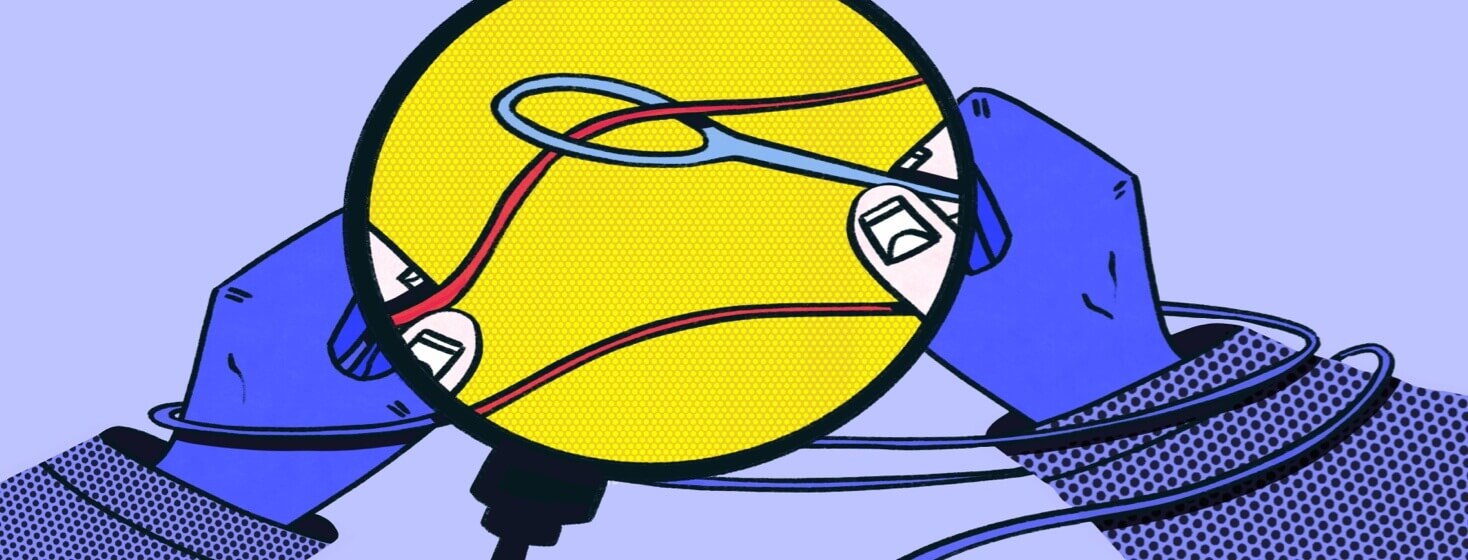Sewing and Macular Degeneration
I would like to start this article with full disclosure: I HATE sewing.
It's important to mention my very non-domestic nature (possibly due to early trauma in Home Ec, do you think?) to help you understand my amazement at something I did today. I mended a sweater. Are you impressed?
Domestic woes
I trace my loathing of this craft back to the seventh grade. It was in Home Economics that year that I was traumatized by having to rip the waistband off an apron 7 – count them: SEVEN – times.
You would think she would have gotten the idea I could not go in a straight line before that, but apparently not. I think the same woman gave me my dislike of cooking, too. What 12-year-old wants to learn to make a 3-bean salad? Shudder.
Sewing with AMD
I have a sweater that needs repair. The cowl neck is separating from the body of the garment. I laid it aside for about 8 months. Maybe it would heal?
However, it is starting to get cool again and I really like that sweater. Time to try my hand at a little sweater repair.
I bought some lightweight yarn I thought would match (It doesn’t). I also bought needles with the largest eyes I could find. Threading the needle using my CCTV (closed-circuit television), I proceeded to repair the hole in my sweater.
The quality of the work is not great, but it is passable. The cowl neck flops down over the repair. I was sort of smug that I got the job done not only as the no-talent I am but also as a visually impaired person.
Can’t be too many VIPs (visually-impaired people) who sew, right?
Helpful resources
Actually, I was wrong. When I looked online I found a fair amount of info, including instructional videos, all about sewing when you are visually impaired.
VisionAware has an entire series of “how-to” suggestions on their site. Their Sewing and Embroidery Series starts with some basics.
These include basic organization of your tools and materials (I believe they lost me already!) and using tools to thread your needles. Remember those little, wire things they would include in some packages of needles? Those.
Helpful tools
They also talk about something called a Hexe or a Witch to hold the needle uptight and push the thread through the hole. I am clueless about this except to say Amazon has them for less than $20 apiece.
They review how to use thread locks – whatever they might be – to keep thread from tangling and refrigerator magnets to collect your pins. That is as opposed to collecting them with fingers and bare feet as I have been known to do.
There are even suggestions for which sewing machines are the most VIP-friendly. I could not use a sewing machine with much success when I was fully-sighted, so more power to you if that is your thing. I am impressed!
Bringing back old hobbies
The whole point is, if sewing and embroidery have been your things in the past before sight loss, there is the real possibility you can continue these hobbies even as a VIP. There are pages of tips online and probably dozens of how-to videos on YouTube.
Add the right helpful gadgets and you can sew again. Really.
If the 7th grade Home Ec disaster can repair a sweater even with low vision, imagine what you could do!

Join the conversation